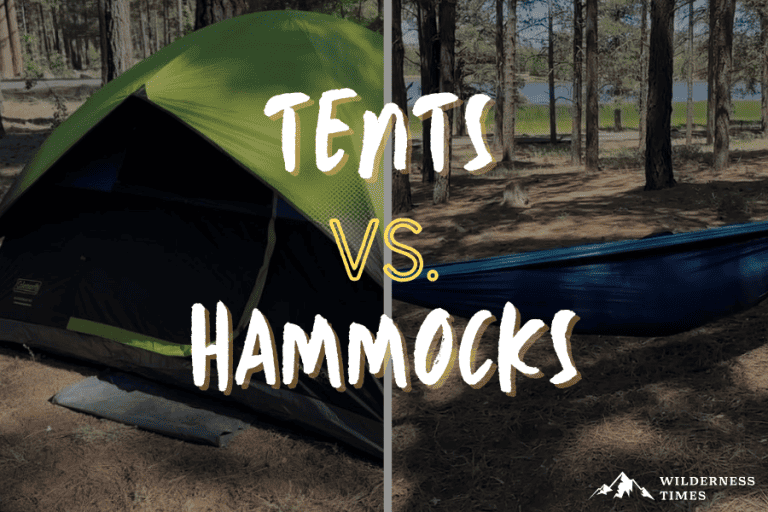In the ongoing battle of tents vs. hammocks, which side are you on? Do you even know?
Whether you are a tent camper considering a switch to hammock camping, or a first-timer wondering whether you should start with a tent or a hammock, there is much to know about each camping method.
Of course, both tents and hammocks have their pros and cons, and head to head it might look like hammocks win, but it’s not that simple (we’ll discuss everything in more detail below):
| Category | Tent | Hammock |
| Comfort | x | |
| Warmth | x | |
| Ease of Use | x | |
| Portability | x | |
| Privacy | x | |
| Durability | x |
Table of Contents
ToggleHammock vs Tent Camping
Which is right for you? From the above table, you’d think that hammock camping is the hands-down winner.
But let’s dive into each of the components to see what is right for you on your backpacking or camping trip.
Tents vs Hammocks: Comfort
It makes sense that when you’re deciding on what you’re going to be sleeping in, comfort is the first thing you think of.
Getting a good night’s sleep is essentially the main parameter of success for any camping experience.
So, how do tents and hammocks compare when it comes to comfort?
Here’s what you need to know:
Tent Comfort
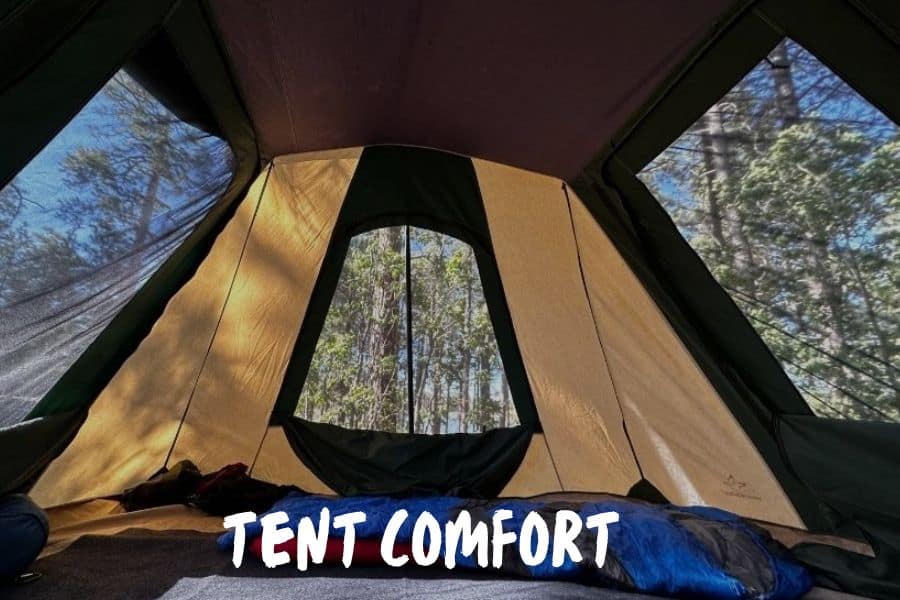
When done right, sleeping in a tent can be just as, if not even more comfortable than sleeping in your own bed at home.
You might not have a proper mattress like you do back home, but the serene sounds of nature all around you more than make up for it.
And anyway, a good air mattress or sleeping pad is far from uncomfortable.
However, there are a few things that can get in the way of a comfortable night’s sleep in a tent.
For example, there could be a stick or rock that you overlooked under your tent, poking you while you sleep.
Another possible scenario is heavy rainfall flooding your tent. But, we’ll get into weather protection in more detail further down.
Hammock Comfort
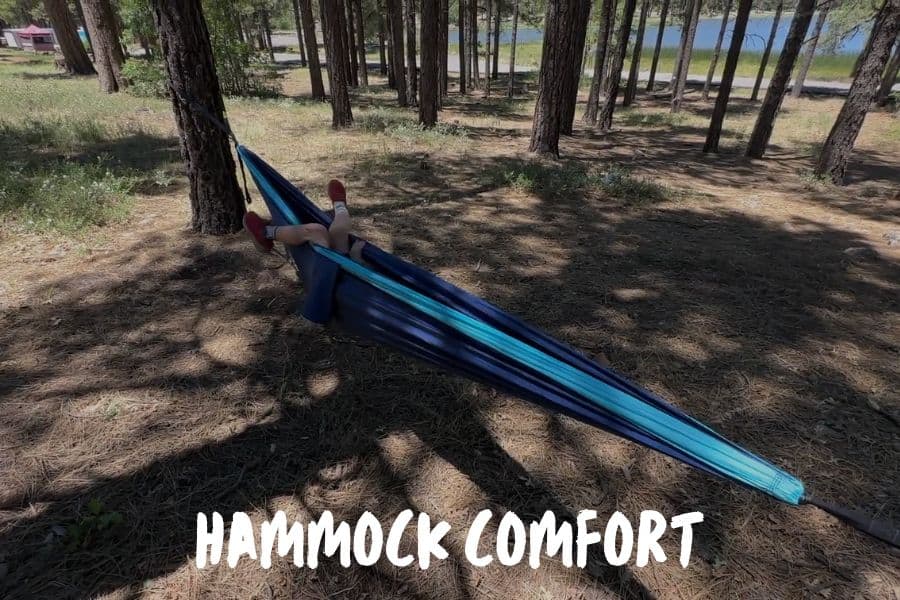
When you’re sleeping in a camping hammock, suspended in the air, you won’t have to worry about flooding, or sticks and rocks poking you from underneath.
However, sleeping in a hammock can take some getting used to. The first few tries might not be the most comfortable experience.
Sleeping on your side in a hammock might feel somewhat awkward to begin with. But, I promise you, once you get used to the position, you’ll sleep more comfortably than you ever have in your life.
A lot of people have made the switch from tent camping to hammock camping because of the superior comfort alone.
Many people with back problems, who have trouble getting a good night’s sleep in a tent, swear by sleeping in a hammock.
When it comes to comfort, a hammock is definitely a better option than a tent.
Tents vs Hammocks: Warmth
Hold up just a minute, though. Being comfortable isn’t the only thing that’s important for getting a good night’s sleep.
You can feel like you’re floating on a cloud, but it won’t mean a thing if you’re freezing your butt off.
So, is it easier to stay warm in a tent or a hammock?
Here’s the tea.
Tent Warmth
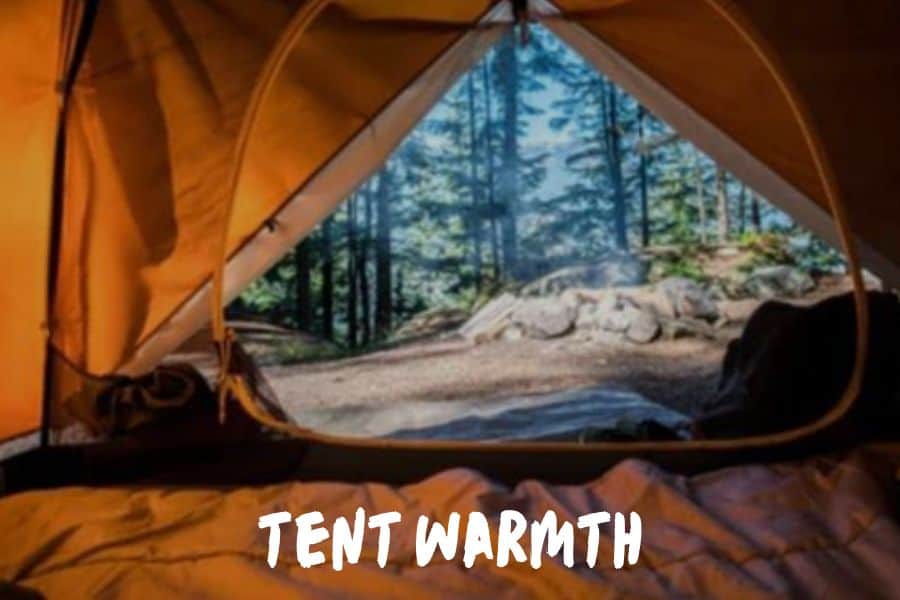
There are lots of ways to stay warm in a tent.
These include wearing the right kind of clothes and having a sleeping bag and pad with adequate temperature ratings.
You can also use a hot water bottle if things get really chilly. Hot water bottles are most effective when placed between your thighs.
Another great trick is stuffing any extra space inside your sleeping bag with dry clothes. Doing this will keep you snug as a bug in a rug, all night long.
You can even use a tent heater, if you really want to crank up the heat.
Hammock Warmth
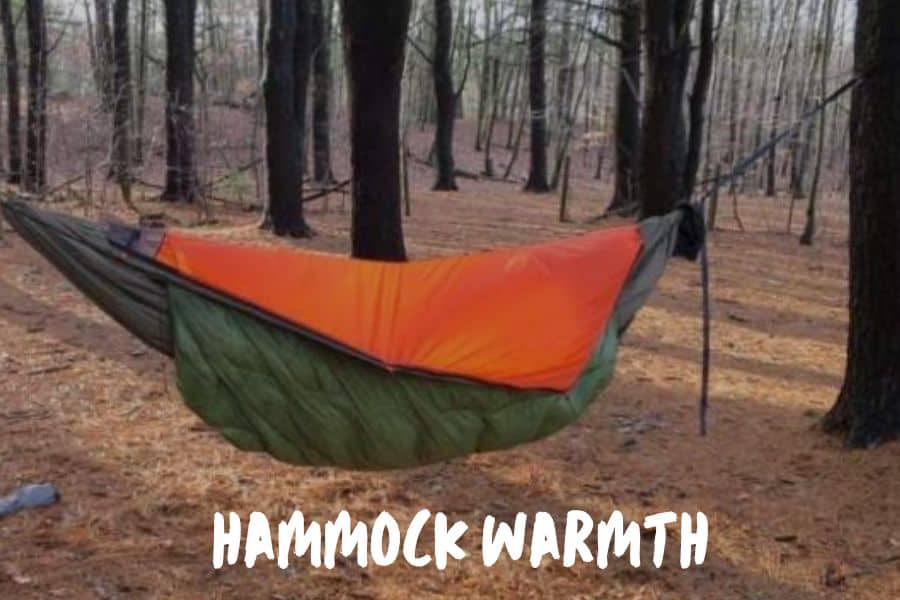
Staying warm in a hammock is a little bit more of a challenge. That’s because you’ve got cold air underneath you with nothing but a piece of fabric to protect your butt.
A good way to solve this issue is by using an under quilt and a sleeping pad in your hammock.
Other than that, you can also choose your clothing and sleeping bag wisely, use a hot water bottle and stuff your sleeping bag like you would in a tent. This will also help you stay extra toasty in your hammock.
Pro tip: unzip your sleeping bag and use it as a blanket instead. A sleeping bag on top of you and a sleeping pad underneath you is your best bet at staying cozy and warm.
Tents vs Hammocks: Ease Of Use
Ease of use is always an important factor to consider. Who wants to waste time flipping through a manual on how to set up either of these shelters?
There are a lot of other, more important things to do around the campsite anyway.
Tent Ease Of Use
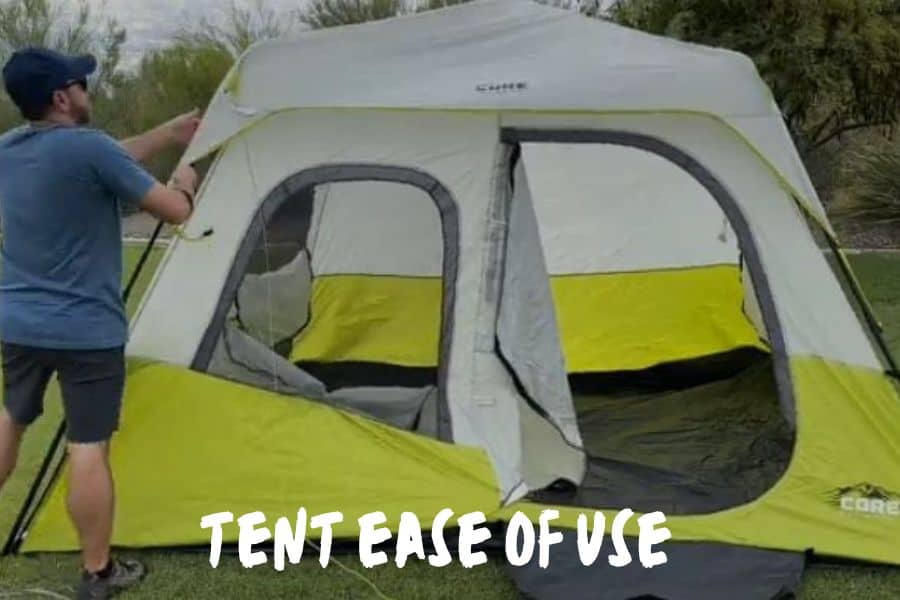
Tents come in all shapes and sizes, and those two characteristics have a great influence on how easy a model is to use.
Obviously, pop-up and instant tents win by a large margin, as they require very little output from your side.
As for those that you actually need to set up manually, dome tents are generally rather straightforward and quick to pitch.
You do need to figure out which part goes where, but with just a few poles at your disposal, that’s rarely an issue.
While the majority of cabin tents on the market feature a single hub, there are models that require a complete set-up.
I’ll be honest with you, those can really take up your time and test your nerves.
Obviously, the size of the tent also plays a role in ease of use.
Even if it just features three poles and has a simple design, if it’s too big you’ll probably need the help of another person to hold things in place.
Hammock Ease Of Use
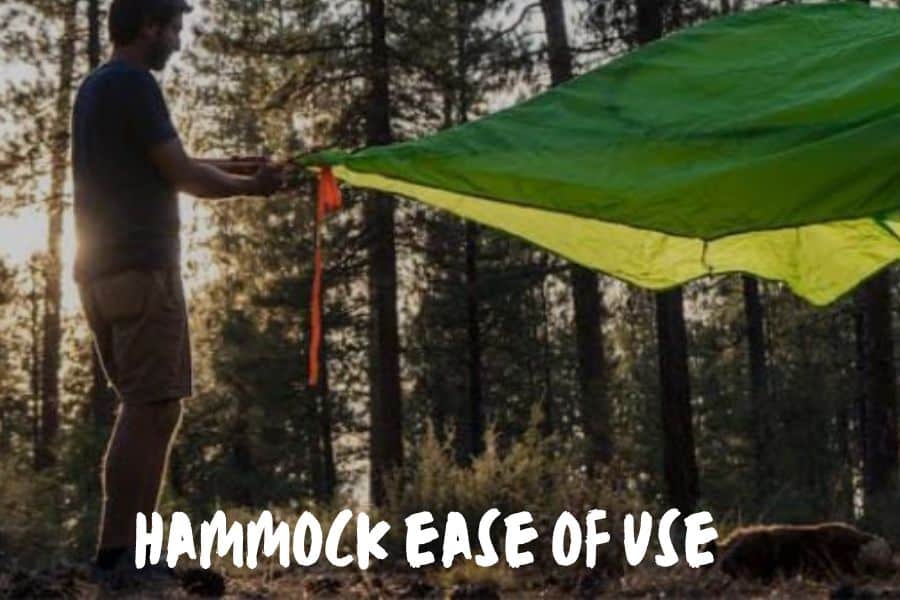
Hanging a hammock is a relatively straightforward job that doesn’t depend on the model of your choice.
Once you find the right trees for suspending a hammock, all you need to do is hang it between them.
Now, you can either use rope or hammock straps for that. Between the two, the latter is not just easier to use, but less damaging for trees.
Basically, all you need to do is wrap the strap around the tree, then hook the rings on the ends of the hammock to the strap rings.
Tents vs Hammocks: Portability
If you’re driving up to a campsite, then portability might not be an important factor to keep in mind.
However, if you’re carrying your gear on your back, then it’s definitely something to consider.
Tent Portability
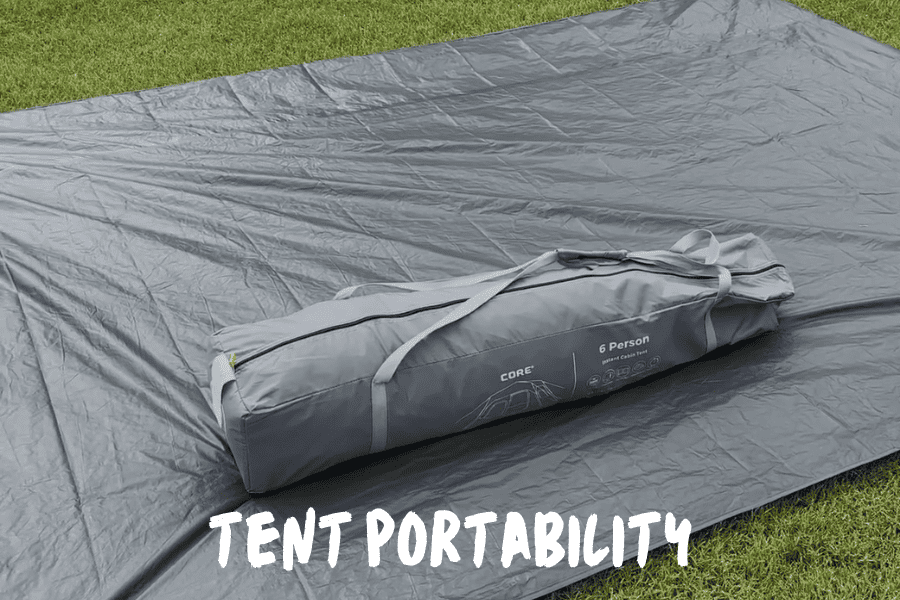
Obviously, tent portability depends a lot on your tent capacity.
A 1-person tent involves much less material compared to a 4-person tent, so naturally, it’s heavier and less compact.
The choice of fabric also affects portability. So for instance, nylon and Dyneema are much lighter compared to polyester and cotton.
That’s why backpacking tents are generally made using the first two fabric options.
Hammock Portability
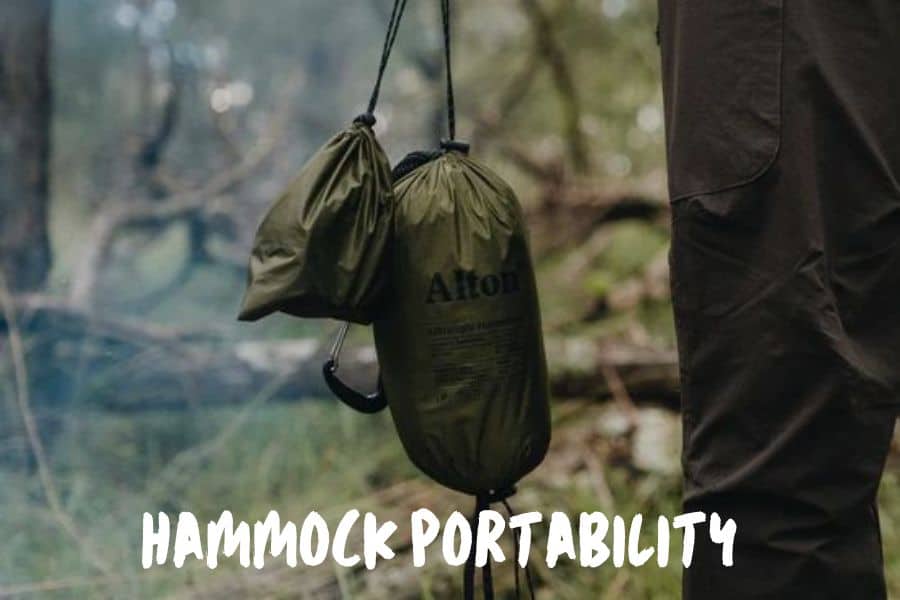
The weight of the hammock also depends on the choice of material. Hammocks are generally made of the same materials as tents – including nylon, polyester, and cotton.
Obviously, there are also rope hammocks, but they’re not designated for camping.
Not just because of their weight (and they are heavy!) but also because they’re not comfortable to spend the whole night in them.
Unlike tents, hammocks don’t have accompanying elements that add more weight, like poles and stakes.
For that reason, they’re generally considered to be a lighter version of a shelter.
Tents vs Hammocks: Privacy
Another feature to keep in mind is privacy.
By this, I mean everything from changing clothes to simply getting away from other people for a while.
So, how do tents and hammocks compare in this category?
Let’s see!
Tent Privacy
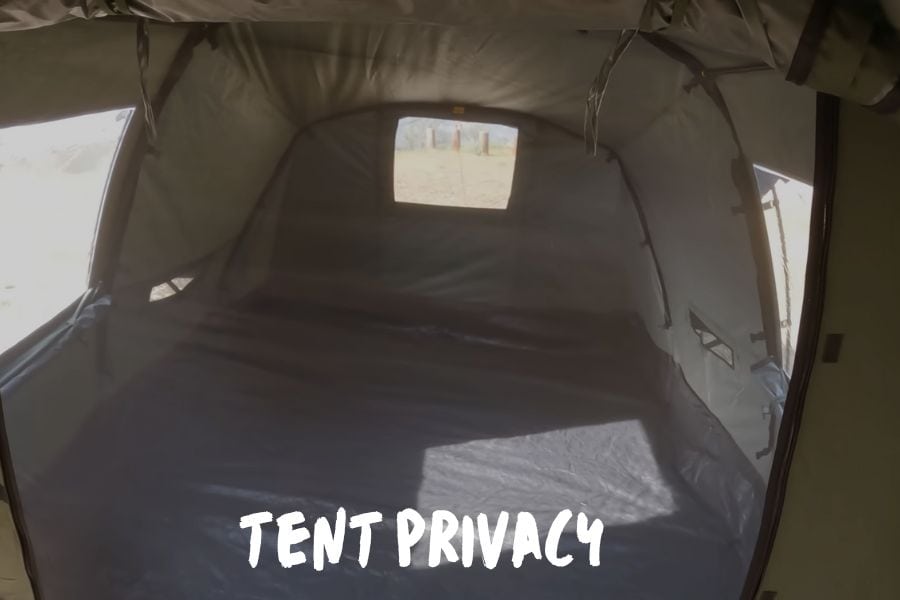
A tent provides a private space for doing stuff – you can go inside to change your clothes, clean yourself with wet wipes, or simply lie down and relax without worrying someone can see you.
In a way, a tent provides you with a living space (no matter how small), where you can hang out to hide from weather elements.
Of course, that’s true if your doors and windows are shut closed and the rain fly (in the case of double-walled tents) is covering the mesh portion of the tent.
Hammock Privacy
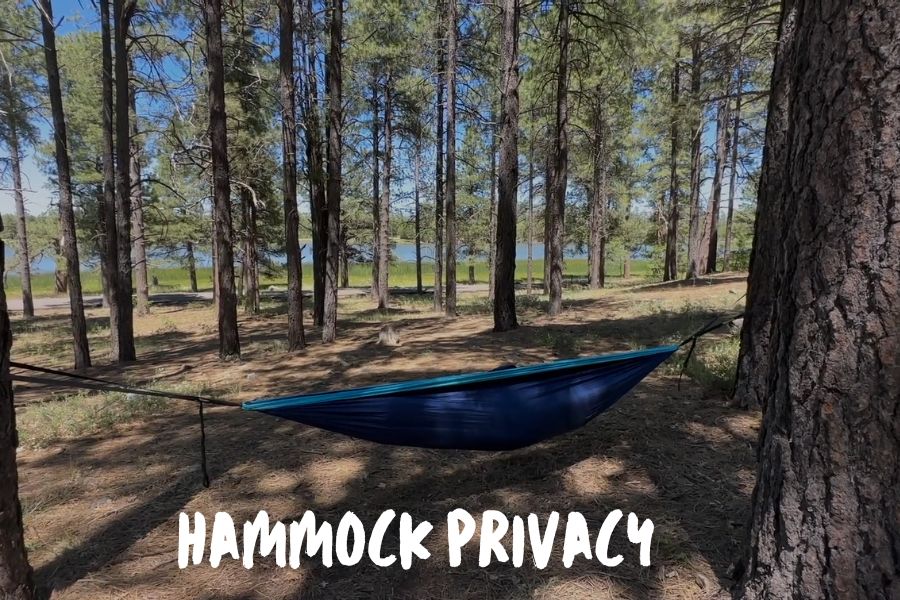
A hammock, on the other hand, offers way less privacy.
In a way, you’re always exposed – you can’t change your clothes, use it as a shelter for cleaning your body or organize your camping gear.
You can’t even hide away from other people’s eyes or weather elements. I mean, technically, you could. But I don’t recommend closing the hammock all the way, as you’ll restrain the airflow inside.
Tents vs Hammocks: Durability
Durability is always an important factor to consider, regardless of the product.
Both a hammock and a tent are supposed to be more or less of a one-time purchase. In other words, you shouldn’t have to replace them for at least several years (unless you utterly destroy them with negligence).
With that being said, the two are slightly different in terms of durability.
Let’s elaborate.
Tent Durability
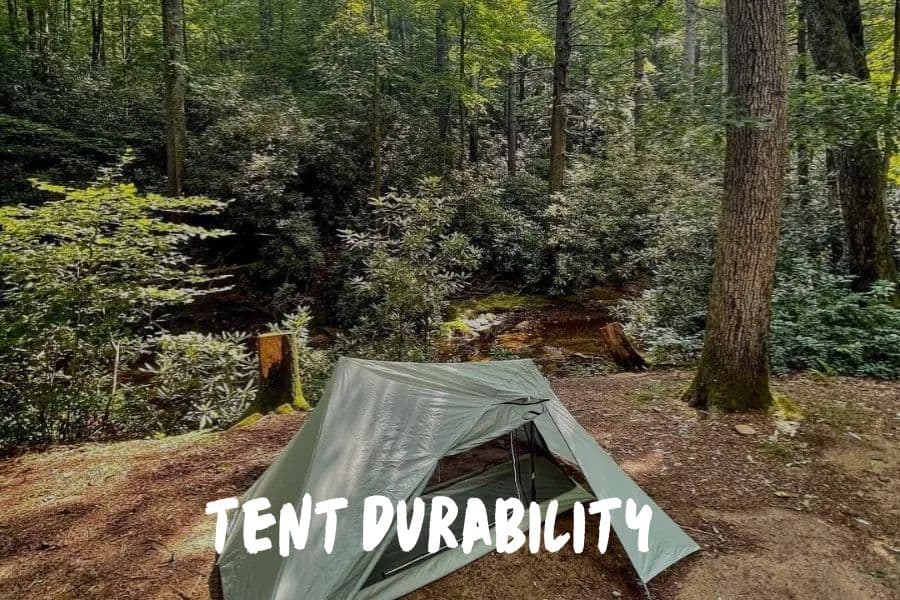
Of course, tent durability depends on the materials used and the quality of manufacturing.
Regardless, there’s a lot that can go wrong with a tent, including:
- Zippers breaking or snagging on fabric
- Poles snapping
- Tent poles bending or breaking
- Mesh getting ripped
The list goes on.
Hammock Durability
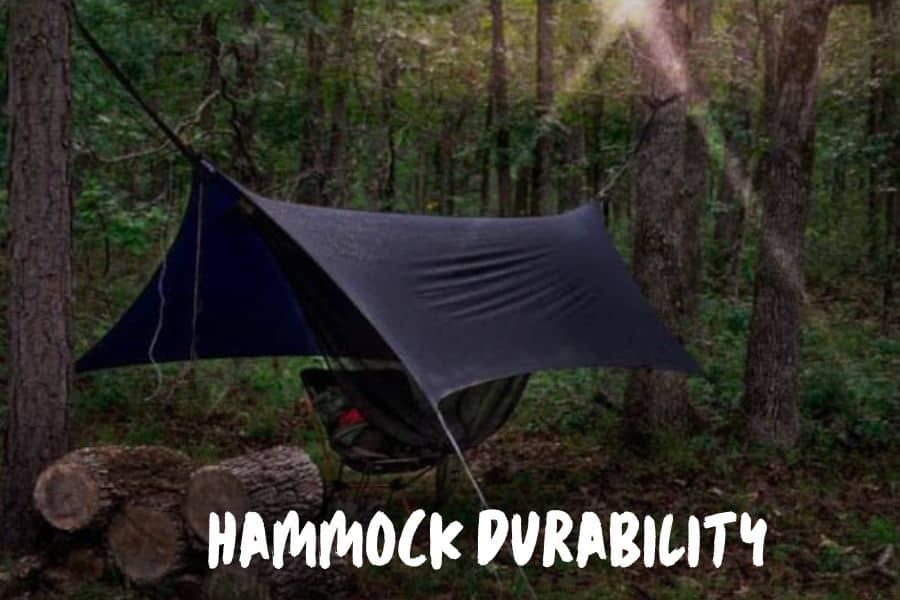
Just like with tents, the durability of hammocks depends on the overall quality of a product. But unlike tents, hammocks are more or less a piece of fabric.
Of course, the fabric can get pierced or ripped, but that’s pretty much all you have to worry about. In most cases, that’s easily fixable with a simple patch.
Tents vs Hammocks: Accessories & Add-Ons
Finally, we can’t forget about all the bells and whistles you might get with a tent or a hammock.
Now, there’s a clear difference in add-on availability between the two types of shelter.
Extra Features For Tents
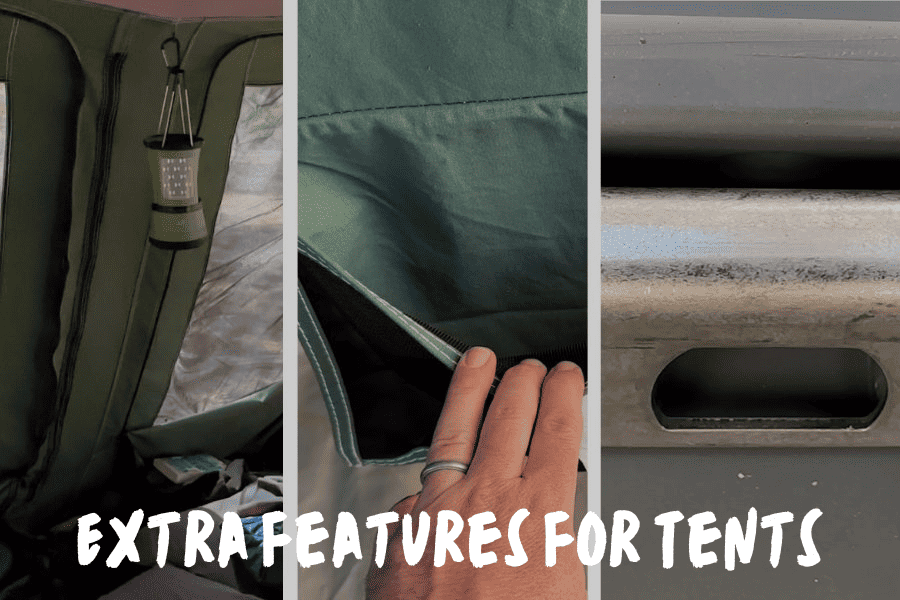
Depending on the model, a tent can have a variety of accessories available.
First, there are tarps, mud rooms, and add-on vestibules, which further increase your hanging out area and provide additional weather protection.
Some models also offer footprints, which not only provide a moisture barrier from below, but also keep the tent floor safe from abrasion and punctures.
There are many cool add-ons that will transform your tent into a proper tent.
From tent mats that keep the inside of your tent clean from dirt and sand, to organizers and camp lights that help you keep the interior tidy.
Extra Features For Hammocks
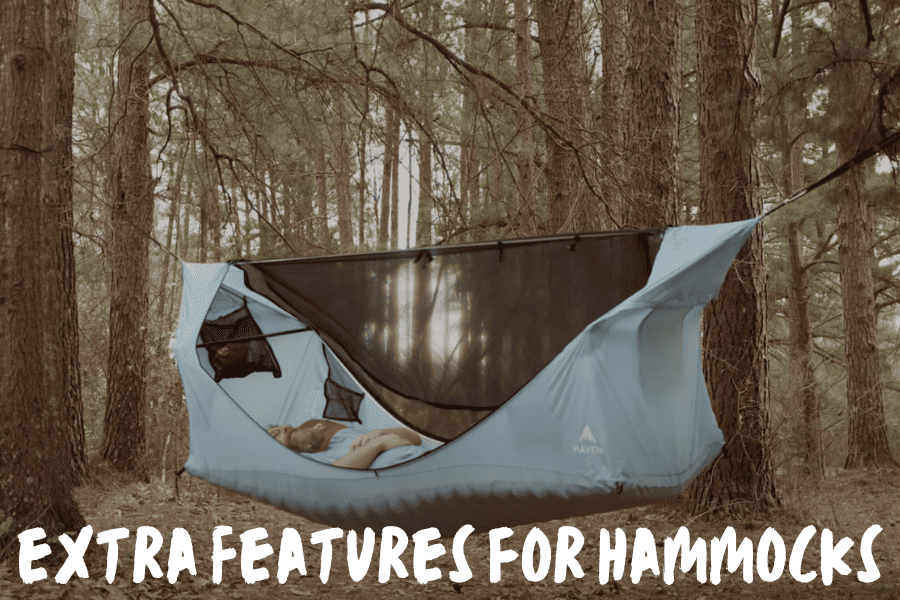
When it comes to hammocks, your accessory options are somewhat limited.
The three most common add-ons for a hammock are tarps, bug nets, and hammock pads.
These accessories can slightly differ one from another depending on the brand, but they’re all pretty much the same.
Tents Vs. Hammocks: Compared
| Category | Tent | Hammock |
| Comfort | x | |
| Warmth | x | |
| Ease of Use | x | |
| Portability | x | |
| Privacy | x | |
| Durability | x |
The Final Verdict
Both tents and hammocks are great, and there isn’t one clear winner.
At the end of the day, it’s going to come down to what your own personal preferences are.
However, personal preferences aside, hammocks truly do come out on top in almost all categories.
In a nutshell, tents are easier to keep warm in.
Hammocks, on the other hand, are more comfortable, easier to set up, and cheaper. They also provide the same amount of protection, if not more.
Considering that with a little extra gear, you can still stay warm in a hammock, it doesn’t really have any major flaws. There’s really no reason not to give hammock camping a go if you haven’t already.
Just remember to give yourself a little bit of time to adjust! It’s well worth it in the end.


